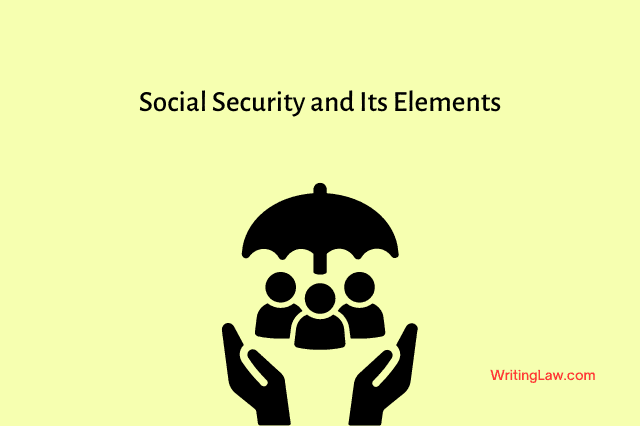
Because life is inherently insecure, society longs for security. Social security is a human right, consisting of many forms of financial aid the government offers people.
There’s a connection between social contract theory and social security. In social contract theory, individuals give up some of their freedoms and rights to the state in exchange for protection and security.
Similarly, in social security, individuals contribute a portion of their income to the state or specific social security programs in exchange for financial assistance and protection in case of unforeseen events such as old age, disability, sickness, or loss of employment.
Therefore, the state is responsible for providing for its citizens’ well-being and mitigating life’s risks and uncertainties.
In this article, we will explore the meaning of social security and its the fundamental aspects.
About Social Security
Section 2(78) of the Code on Social Security, 2020 defines social security as a system of measures designed to provide a safety net for individuals and families who face financial difficulties due to certain contingencies, such as old age, illness, disability, or unemployment.
Social security systems aim to protect individuals from poverty and deprivation and ensure a minimum standard of living.
Key Elements of Social Security
The below aspects are provided by the Social Security (Minimum Standards) Convention (No. 102) adopted by the International Labour Organisation (ILO) in 1952:
1. Medical Care
Medical care is an essential aspect of social security that ensures individuals access necessary healthcare services. This includes preventive, diagnostic, and treatment services to maintain and improve the health and well-being of individuals.
Under social security schemes, beneficiaries receive medical care that covers a range of services, such as doctor consultations, hospitalisation, medical treatments, surgeries, and medications.
2. Sickness Benefits
Sickness benefit provides financial support to individuals who are unable to work due to temporary illness or incapacity. It aims to compensate for the loss of income during the period of sickness and helps individuals meet their basic needs during their recovery.
The benefit is typically provided for a specific duration or until the individual is fit to resume work.
3. Unemployment Benefits
Unemployment benefits offer financial assistance to workers who have lost their jobs involuntarily. It provides a safety net during unemployment, helping individuals meet their basic needs while searching for new employment opportunities.
Unemployment benefits may be provided for a limited duration and are usually subject to specific eligibility criteria.
4. Old Age Benefit
Old age benefits, commonly known as pensions, provide financial support to individuals after they reach retirement age. These benefits are designed to ensure a stable income for senior citizens who have ceased their active working lives.
Old age benefits improve retirees’ quality of life and provide a sense of security during their retirement years.
5. Employment Injury Benefit
Employment injury benefits are provided to workers who sustain injuries or contract diseases during their employment. This aspect of social security offers compensation for medical expenses, rehabilitation, and income support during the period of recovery. It helps workers cope with the financial burden caused by work-related injuries or illnesses.
6. Family Benefit
Family benefits aim to support families and dependents of workers by providing financial assistance in specific circumstances. These benefits may include financial support for dependent children, single parents, or low-income families. The objective is to enhance families’ well-being and ensure dependents’ social and economic security.
7. Maternity Benefit
Maternity benefits support women during pregnancy and childbirth. These benefits typically include paid leave during the prenatal and postnatal periods, ensuring that pregnant women can take time off from work to care for themselves and their newborns without financial hardship. Maternity benefits contribute to promoting maternal and child health.
8. Invalidity Benefit
Invalidity benefits offer financial support to individuals who become permanently or severely disabled and cannot work. This aspect of social security ensures that individuals with disabilities have access to financial assistance to cover their living expenses and medical needs.
9. Survivor’s Benefit
Survivor’s benefits provide financial support to a deceased worker’s family members or dependents. These benefits offer income support and financial security to surviving spouses, children, or other eligible beneficiaries after the death of the primary breadwinner.
Conclusion
Social security encompasses various crucial benefits and support mechanisms, including medical care, sickness benefits, unemployment benefits, old-age pensions, family benefits, maternity benefits, and more. These provisions play a vital role in promoting the well-being and protection of individuals during various life situations, fostering a more inclusive and caring society.
- What Is Misappropriation of Trade Secrets and Its Defences? - 15th May 2024
- 7 Important Types of Mediation Briefly Defined - 14th May 2024
- Whirlpool India vs Videocon Industries – Case Explained - 13th May 2024







